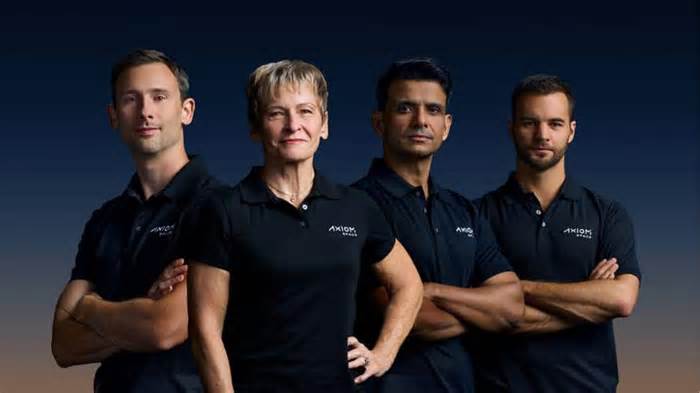
New fleets of private satellites are clogging the night sky - Science News
- by Science News
- Mar 12, 2020
- 0 Comments
- 0 Likes Flag 0 Of 5

Share via email (Opens in new window)
Email 640 (internet and other satellites)
China’s Aerospace Science and Technology Corporation
156
“This could easily grow to 50,000 or more,” Seitzer said.
Instead of six to nine Starlink satellites in view at a time, astronomers might
need to dodge a couple hundred bright satellites during twilight hours.
But Seitzer’s simulations assume that the satellites will be
at SpaceX’s current operational altitude of 550 kilometers. London-based
OneWeb, which launched 34 satellites in early February, adding to the six it
launched in 2019, is putting its constellation in a 1,200-kilometer orbit,
which SpaceX is also considering for later launches. At that height, the
satellites might appear fainter from Earth. But that also means more of the
orbit can be seen from the ground, leading to larger numbers of satellites
visible and for longer into the night.
At the Cerro Tololo observatory, higher-orbit satellites
would be visible all night long in the month of December, Seitzer said, when
many would not disappear in Earth’s shadow. “I don’t like that equation,” he
said. “I’d rather have the damage confined to a small time rather than have it
go all night.”
The actual damage to any one scientist’s research depends on
what’s being studied. For Cliff Johnson, the Starlinks in his November 18 image
doubled the amount of unusable picture elements, or pixels, from about 10 to 20
percent.
“It’s annoying, but it’s not necessarily hurting the science
all that much,” he says, referring to his work. Despite their name, the dwarf
galaxies he’s searching for appear relatively large through a telescope and so
a few satellite streaks won’t obliterate one image. And Johnson’s survey always
takes multiple images of any one patch of sky, so there’s a chance to fill in
lost pixels. “That’s not the case across the whole astronomical community,”
Johnson says.
For astronomer Krzysztof Stanek of Ohio State University in Columbus, hordes of bright satellites in his telescope views could be a disaster. Stanek helps run the All-Sky Automated Survey for Supernovae, a network of 24 telescopes that scan the skies for exploding stars. On January 15, recently launched Starlink satellites flew in low orbit over one of the telescopes Stanek’s team was using, leaving streaks that remained in an image even after data processing that usually smooths over such blemishes.
“We have an image with about 10 trails comparable in
brightness to what a distant supernova would be,” Stanek says. While that’s not
yet typical, “I am extremely concerned that, once [SpaceX reaches] the
projected size of the network, there will be multiple satellite trails crossing
any given field of view at all times.”
Rubin’s dilemma
Already, scientists working on the Large Synoptic Survey Telescope — recently rechristened the Vera C. Rubin Observatory (SN Online: 1/10/20) — are anticipating trouble. Starting in 2022, the Rubin Observatory, also in Chile, will take images every three days of the entire sky for 10 years.
But reflected light from satellites could mess with twilight
observations required for searching for Earth-threatening asteroids that might
approach from the direction of the sun, says Tony Tyson, an astrophysicist at
the University of California, Davis and chief scientist for the observatory.
The arXiv.org study suggests that 30 to 50 percent of exposures taken around
the beginning and end of the night will be “ruined.”
SpaceX’s Starlink satellites (one illustrated, left) are flat with a single solar panel that unfolds like an accordion. OneWeb’s satellites (one illustrated, right) are boxy and flanked by two solar panels.
From left: SpaceX; OneWeb
The new satellites also could jeopardize a study of how dark
matter has evolved over cosmic history. That study depends on sensitive
observations of faint galaxies that some satellite trails can mimic.
Recent experiments have shown that Starlinks are just too
bright for Rubin’s detectors, Tyson says. Pixels are like little buckets of
light that can overflow, leading to image streaks that completely mask light
from the cosmos and to “ghost streaks” caused by electrical interference with
neighboring pixels, all of which hinders data cleanup.
The observatory’s researchers are working on a three-pronged
fix. They are developing new algorithms to recover some lost data in defaced
images. The team is also looking into slowing the rate at which information is
read from the image detectors, which can reduce electrical interference between
pixels at the cost of slowing observations just a bit.
Finally, the group is testing whether it’s possible to
sidestep the satellites altogether. The survey will use artificial intelligence
to shift the telescope’s gaze from one patch of sky to another, while keeping
bright objects like the moon and satellites away from the telescope’s view.
However, a fully populated Starlink system could give the AI a headache.
“It works like a charm for maybe 1,000 [Starlink] satellites,”
Tyson says. “Once you get above 10,000 satellites, it starts failing, and by
the time you get to 50,000 satellites, it ends up in a wild goose chase.” The
team is working with SpaceX to include Starlink orbit details within the AI
itself, though it’s unclear how much that will improve things.
Cosmic Wild West
SpaceX has said it will fix the brightness problem, and some
astronomers are cautiously optimistic about the company’s willingness to
engage. One of the 60 satellites launched January 6 was coated with a substance
to make the satellite darker than its siblings, and astronomers will be
watching to see if that helps. But if the dark coating works and makes the
satellite sufficiently faint to optical astronomers, scientists who use
infrared telescopes might not be thrilled — a dark satellite absorbs more heat,
making it brighter to those telescopes.
Researchers who are less impressed by SpaceX’s response
wonder why the company darkened only one satellite in its fleet. “If they were
serious about it, they would have stopped launching more satellites,” at least
temporarily, Stanek says. “They would conduct a good scientific study of their
impact, and then maybe they would start launching again.”
Cooper, the SpaceX representative, confirmed at the January Honolulu meeting that the company will continue launching unmodified satellites — a fourth batch went up January 29 followed by a fifth on February 17. The next launch, from NASA’s Kennedy Space Center at Cape Canaveral, Fla., is scheduled for March 14.
As recently as March 9, SpaceX CEO Elon Musk declared that Starlink will have no impact on astronomical observations. “Zero. That’s my prediction,” he said at the 2020 Satellite Conference in Washington, D.C. “We’ll take corrective action if it’s above zero.” OneWeb did not respond to requests for comment, while an Amazon representative said the company is not granting interviews at this time.
Private companies face little international oversight on
their activity in space, so there is no guarantee that SpaceX will continue to
work on the problem or that other companies will collaborate with researchers
on ways to minimize the potential damage.
And that’s the rub: When it comes to rules on private companies, space is the Wild West. Negotiations to establish regulations would require cooperation among many countries, possibly mediated by the United Nations, and that could take many years to work out. The International Astronomical Union said in a Feb. 12 statement that it will regularly brief meetings of the U.N. Committee on the Peaceful Uses of Outer Space to bring “the attention of the world government representatives to the threats posed by any new space initiative on astronomy and science in general.” But the satellite launches are happening now, so astronomers can only hope that private companies are receptive to their concerns.
Scientists also realize they have to balance their desire
for clear skies with the potential benefits of expanded internet for those
without access. At the January meeting, Pamela Gay, an astronomer with the
Planetary Science Institute who is based in Edwardsville, Ill., asked speakers
at one of the conference panels: “How do we argue to save the skies but not
allow low-cost internet to be an option to remote places?”
Panel members agreed that a swarm of low-orbit satellites is
the most cost-effective way to establish fast, reliable internet across the
globe. But the astronomers also hope companies will think of the night sky as a
natural resource to be protected, like a national park, and minimize the
disturbance from internet satellites.
“We can have these two things together,” said Ruskin Hartley,
executive director of the International Dark-Sky Association in Tucson. “We
need to come up with a way that we can help bring the social groups of the
world to technology and innovation that protects the heritage of dark skies
around the world.”
Questions or comments on this article? E-mail us at feedback@sciencenews.org | Reprints FAQ
A version of this article appears in the March 28, 2020 issue of Science News.
Citations
Please first to comment
Related Post
Stay Connected
Tweets by elonmuskTo get the latest tweets please make sure you are logged in on X on this browser.






 Energy
Energy


















